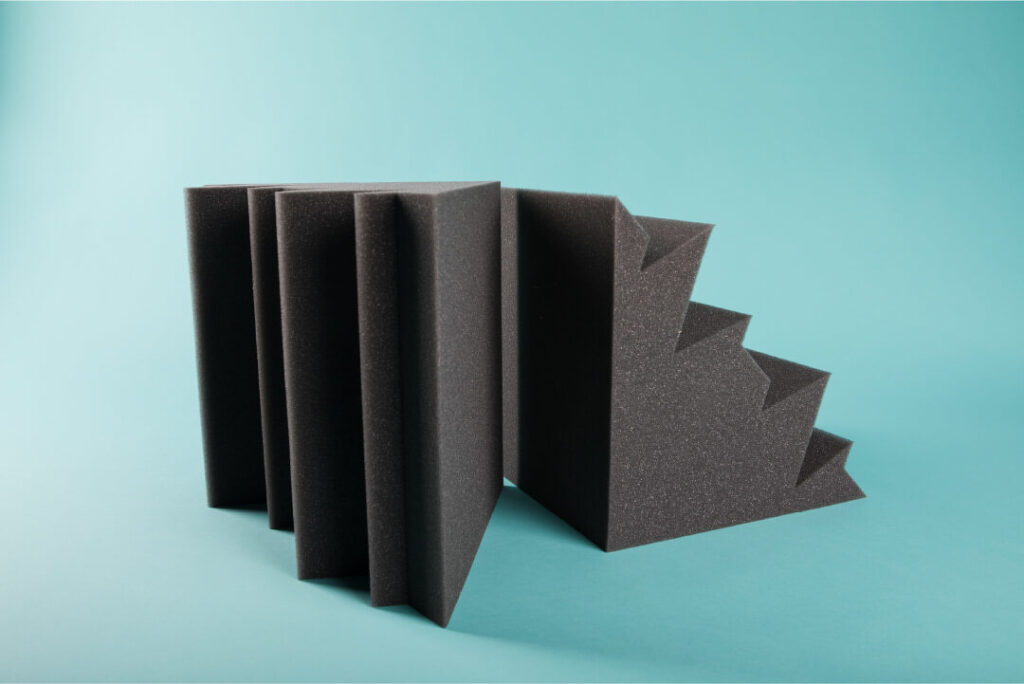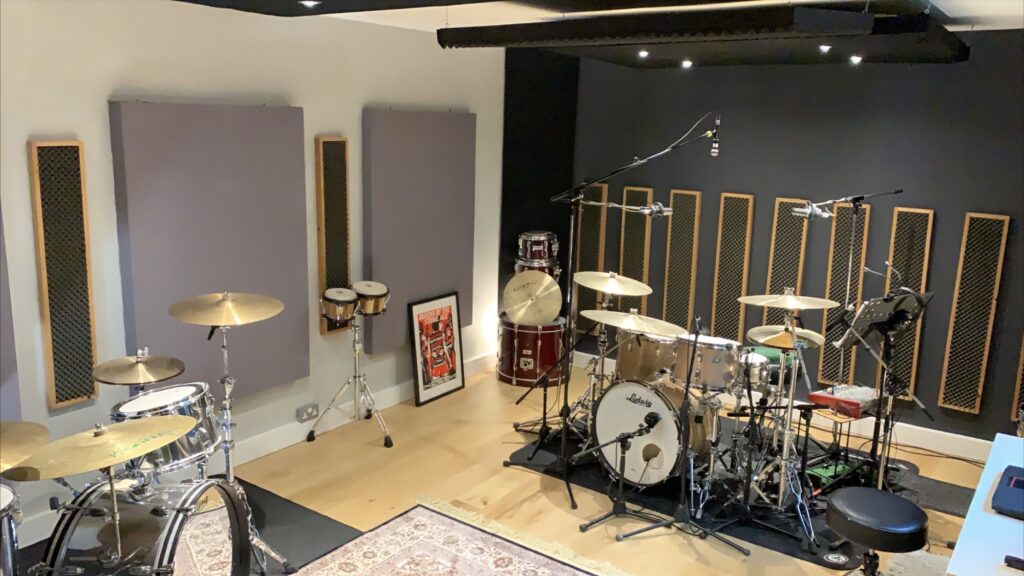When it comes to achieving pristine sound quality in any space, be it a home studio, a rehearsal room, or a professional recording studio, controlling bass frequencies is crucial. Excessive bass buildup can muddy the sound, leading to a lack of clarity and definition in your recordings or listening experiences. One effective solution for mitigating bass issues is the installation of foam bass traps. In this comprehensive guide, we’ll walk you through the process of installing foam bass traps to enhance the acoustics of your room.
1. Understanding Bass Traps

Bass traps are acoustic treatment devices designed to absorb low-frequency sound waves, particularly those below 250 Hz. They help to reduce bass buildup in a room, which can result from standing waves and other acoustic anomalies. Foam bass traps, in particular, are popular due to their effectiveness, affordability, and ease of installation.
Learn More: Acoustic Panels Vs. Bass Traps
2. Selecting the Right Foam Bass Traps
Before diving into the installation process, it’s essential to choose the right foam bass traps for your space. Consider factors such as the thickness and density of the foam, as well as the dimensions of the traps. Thicker and denser foam traps are typically more effective at absorbing lower frequencies. Additionally, pay attention to the aesthetics of the foam traps, as they will be visible in your room.
3. Planning the Placement
Proper placement of bass traps is critical for optimal acoustic performance. Start by identifying the areas in your room where bass buildup is most prominent. Corners are common locations for bass traps since low-frequency sound waves tend to accumulate in these areas. Additionally, consider placing bass traps along the reflection points on the walls and ceiling to control mid and high-frequency reflections.
4. Installing the Foam Bass Traps
Once you’ve determined the placement of the bass traps, it’s time to install them. Follow these steps for a hassle-free installation process:
- Clean the surface: Before attaching the bass traps to the walls or ceiling, make sure the surface is clean and free of dust and debris.
- Apply adhesive: Use a suitable adhesive recommended by the manufacturer to secure the bass traps in place. Apply the adhesive evenly to the back of the traps.
- Press firmly: Press the bass traps firmly against the wall or ceiling to ensure proper adhesion. Hold them in place for a few seconds to allow the adhesive to bond effectively.
- Allow for curing time: Depending on the type of adhesive used, allow sufficient time for it to cure before testing the effectiveness of the bass traps.
5. Testing and Adjusting
After installing the foam bass traps, it’s essential to test their effectiveness and make any necessary adjustments. Play music or produce sound in the room and listen for improvements in bass clarity and definition. If you notice areas where bass buildup persists, consider repositioning or adding additional bass traps to those locations.
Contact Waseem Muhammad Technical Soundproofing Expert in Dubai: +971 50 209 7517
In conclusion
Installing foam bass traps is a practical and effective way to improve the acoustics of any room by controlling bass buildup. By following the steps outlined in this guide and considering the FAQs, you can achieve optimal sound quality and create a more conducive environment for music production, listening, and enjoyment.
FAQs
Can foam bass traps completely eliminate bass issues in a room?
While foam bass traps are highly effective at absorbing low-frequency sound waves, they may not completely eliminate bass issues, especially in larger or irregularly shaped rooms. However, they can significantly improve bass clarity and reduce the severity of bass buildup.
How many bass traps do I need for my room?
The number of bass traps needed depends on various factors, including the size and shape of the room, as well as the specific acoustic issues present. As a general guideline, aim to cover the corners of the room and the reflection points on the walls and ceiling with bass traps for optimal results.
Can foam bass traps be used in conjunction with other acoustic treatments?
Yes, foam bass traps can be used alongside other acoustic treatments, such as acoustic panels and diffusers, to achieve comprehensive sound control in a room. Combining different types of acoustic treatments can provide more balanced absorption across the frequency spectrum.
Do foam bass traps affect the aesthetics of a room?
Foam bass traps come in a variety of colors and designs, allowing you to choose options that complement the aesthetic of your room. While they are visible, many foam bass traps are designed to blend seamlessly into the decor without compromising on effectiveness.




